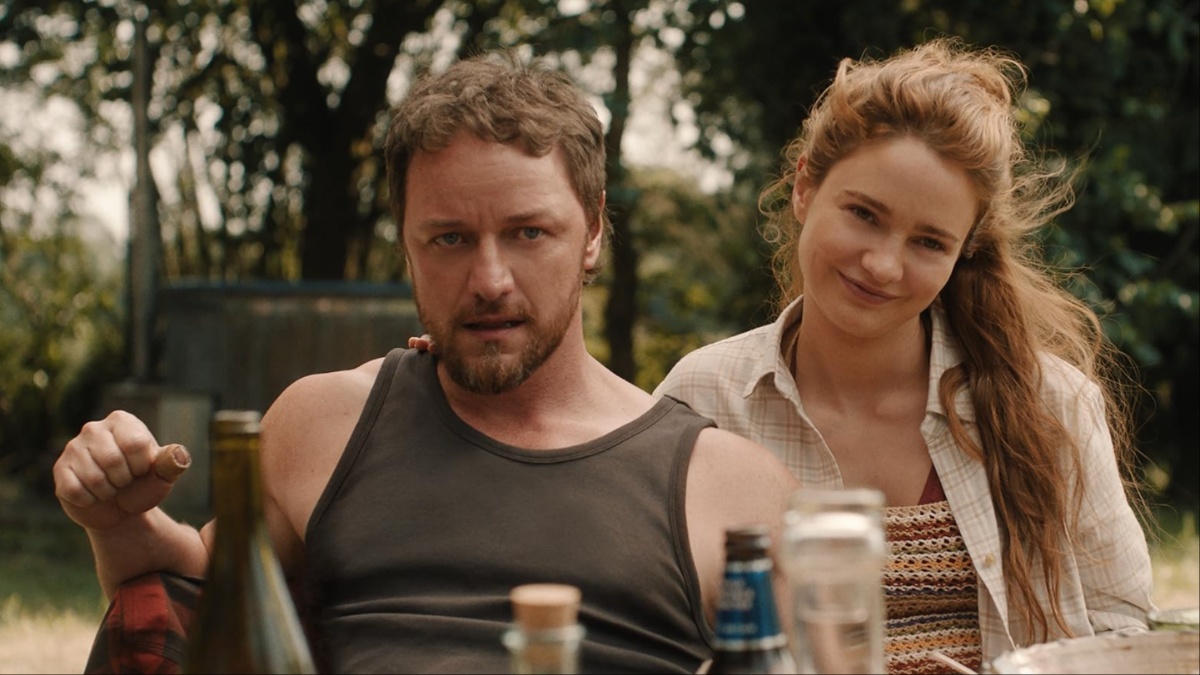none
James McAvoy and Director James Watkins Break Down the Shocking Ending of Speak No Evil
Warning: This article contains spoilers from Speak No Evil.
James Watkins’ Speak No Evil, a remake of Christian Tafdrup’s 2022 Danish original, shares the same basic premise but diverges dramatically in how its characters handle their escalating predicament. This difference becomes pivotal in how the two films conclude, as the remake offers a far more defiant response from its characters compared to the chilling compliance in the original.
Both films center on two couples who meet on vacation with their young children. After returning home, one couple invites the other to their secluded country home. Initially, awkward yet harmless social interactions unfold as the visiting couple, played by Scoot McNairy and Mackenzie Davis in the 2024 version, contrast with their free-spirited hosts, portrayed by James McAvoy and Aisling Franciosi. However, as the hosts’ behavior becomes increasingly bizarre and threatening, the visiting family begins to suspect something sinister.

Watkins highlights the core theme of how social constraints and politeness can trap people. “It explores how we can all be constrained and trapped by the social rules and by our own politeness and how we can sometimes find it difficult to negotiate or call out bad behavior,” he explains. “It’s that notion that the road to hell is paved with good intentions and by people self-censoring.”
While the films share this exploration of social dynamics, the endings differ drastically. In the original, the visiting couple remains passive even in the face of imminent death, infamously digging their own graves. But in Watkins’ version, McNairy and Davis’ characters don’t go down without a fight.
“I didn’t believe they [Americans] would be completely compliant,” Watkins says, noting how he wanted to explore how people react when faced with violence. “Whether it’s to run, to hide, to fight, you at least try when you and your child are in mortal danger. That’s a difference in my movie.”
McNairy, who plays the protective father, agrees that people’s responses to trauma vary but felt compelled to show resistance, especially when his child was at risk. “For me personally, it felt like you would do whatever you got to do, even if it takes your life, to help your kids. I don’t know if that’s a cultural difference or just a personal difference.”

The more defiant ending provided a sense of catharsis for both McNairy and Davis. McNairy loved the original film but found himself wanting the parents to take a stand. “One of the things that didn’t sit with me from watching the Dutch version was I really wanted those parents to do something in the end, at least try to fight,” he says. Davis echoes this, noting that while the original’s ending was powerful, the remake’s conclusion offers a bit more emotional relief after the tension of the film.
However, the updated ending still remains grounded, avoiding the trope of an unrelenting Hollywood hero. McNairy appreciates that the film stays within the realm of reality, stating, “There’s strength in weakness. There’s strength in being a good father. There’s strength in fighting for your family. And through that strength, he can find resistance.”
McAvoy jokes about the two versions of Speak No Evil, quipping, “Ours is better!” before quickly clarifying that both films offer unique perspectives. He praises how different cultural contexts can influence character decisions, making both versions stand out in their own way.
Ultimately, while the remake of Speak No Evil offers a more active response to danger, it retains the disturbing psychological tension that made the original so haunting.
Speak No Evil is now in theaters.
Stay connected with Growkoc for more updates. Share your favorite memories and moments in the comments below!


